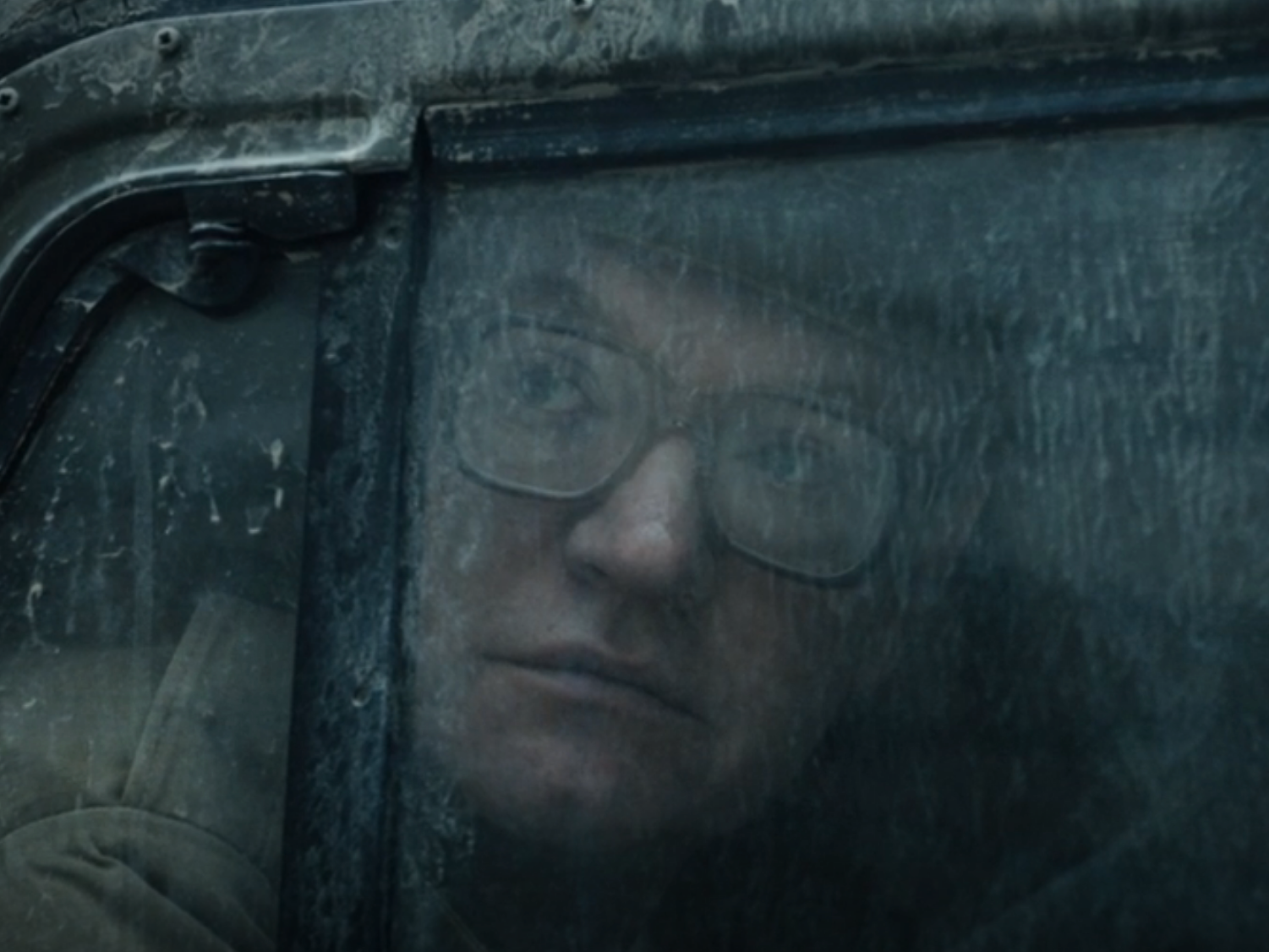Nosferatu & German Expressionism
by Devin Baron
Shot Choice --- 0:40:40-0:40:50
The films of the German Expressionist Movement placed great emphasis on composing unique, stylized mise-en-scene that externally displayed that which was internal. Nosferatu (1922) is a German Expressionist film that does just that, allowing the inner malignancy of Count Orlok (Max Schreck) to pervade the surrounding mise-en-scene. One shot that exemplifies this pervasiveness is the shot in which Hutter (Gustav von Wangenheim) pushes the coffin lid aside to reveal Count Orlok’s lying body within it. F.W. Murnau and his crew use set design, costuming, and acting gestures to demonstrate Hutter’s fear of Count Orlok and to bring that fear to life throughout the frame.
A sense of death and corruption is evident in the set design. The element that stands out most obviously is the coffin. At this point in the film, it is presumed that Orlok is not dead; so seeing the coffin plants an ominous seed of uncertainty. Strengthening this sense of corruption is the terrain and texture of the surroundings. The walls, stairs, and floors all appear chewed up. This deteriorated aesthetic lets us peer into the condition in which Orlok’s mind and spirit are operating. At last, the cracks in the floor add to the design, reinforcing Orlok’s lack of wholeness, alluding once more to the fact that he is not fully human.
The costuming of these two characters draws on expressionist themes. Everything about Count Orlok’s attire is dark black. The solidarity of his clothing signifies that he is one thing and nothing else --- evil. Everything about Orlok is linear and driven towards a consistent, evil goal. On the other hand, Hutter’s attire has variety. While his coat is dark black, his pants and shirt are more of a brown color. Even the underlining of his coat is a lighter shade of black. Hutter can be seen then as multifaceted. He must do this job for his boss. He must return to take care of his wife. He must not die. He is suspicious and frightened, but he is also curious and daring. His dress is interrelated with what he is experiencing internally.
According to Kristin Thompson and David Bordwell, in German Expressionist films, “faces wore grotesque, anguished expressions.” (Thompson, 105) Count Orlok’s face, when the coffin lid is lifted, is a perfect example. He has exaggerated, wide-open eyes, distorted ears, and deranged eyebrows. Coupled with his unusual face, the most grotesque aspect of Orlok’s appearance in this shot is his bizarre-looking fingers. They are crooked, sharp, and distorted. The unrealistic style the fingers embody is a trait of German Expressionist films. Compare Orlok’s malevolent hands to Hutter’s hands. When Hutter grasps the stairs, attempting to regain his bearings, he looks desperate, powerless, and almost innocent. This dissimilarity gives a glimpse into Orlok’s controlling effect on Hutter.
Another aspect of the mise-en-scene that portrays Hutter’s paranoia is the performance. Thompson and Bordwell wrote that “actors shouted, screamed, gestured broadly, and moved in choreographed patterns.” (Thompson, 105) When he first flips the lid, Hutter takes an exaggerated pause (0:40:42). It’s not until four seconds later (0:40:46) that he starts to stumble towards the staircase. That awkward stumble is composed in a way that makes Hutter feel powerless. As he falls away, he increases the distance between himself and the camera. The movement contrasts with Orlok’s stillness. Orlok remains the same distance from the camera throughout the shot, holding a firm, powerful place in the frame. His composition shows that he is in control.
The internality of Hutter and Orlok oozes into every part of this shot. From the perverted set design to the overemphasized costuming and performances, Nosferatu is a major staple in the German Expressionist Movement, fully exhibiting the concept of distorted and exaggerated mise-en-scene.
Bibliography:
Murnau, F.W., director. Nosferatu. 1922.
Thompson, Kristin and David Bordwell, Film History: An Introduction. 2nd Edition. New York: McGraw-Hill, 2002.








